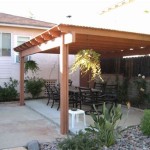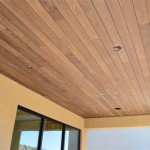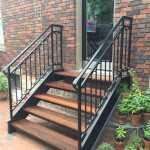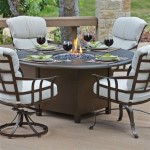Bringing Spanish Style To Your Patios And Living Rooms
Spanish style, with its vibrant history rooted in Moorish, Mediterranean, and European influences, offers a warm and inviting aesthetic that can transform both patios and living rooms. Characterized by earthy tones, natural materials, and a focus on communal spaces, incorporating Spanish design elements can create a comfortable and visually appealing environment. The style favors functionality and simplicity, often featuring handcrafted details that add personality and charm. From rustic furniture to vibrant textiles, Spanish design offers a wealth of possibilities for creating a space that is both beautiful and practical.
The key to successfully implementing Spanish style lies in understanding its core components and adapting them to individual preferences and spatial limitations. It is not about rigidly replicating a traditional Spanish home, but rather about capturing the essence of the style through careful selection of colors, materials, furniture, and accessories. Consider the existing architectural features of the space and how they can be enhanced or complemented by Spanish design elements. Attention to detail and a thoughtful approach are essential for achieving a cohesive and authentic look.
Embracing Earthy Tones and Textures
Color palettes in Spanish design typically revolve around warm, earthy tones. Think of the colors of the Spanish landscape: terracotta, ochre, sand, and sun-baked clay. These colors create a sense of warmth and connection to the natural world. Walls are often painted in shades of white or cream to provide a neutral backdrop that allows other elements to stand out. Accent colors, such as deep blues, greens, and reds, can be incorporated through textiles, pottery, and artwork to add visual interest and depth.
Texture plays a crucial role in Spanish design. Rough plaster walls, exposed brick, and natural stone are commonly used to create a sense of rustic charm. Consider adding texture through other means, such as woven rugs, embroidered cushions, and hand-thrown pottery. The interplay of different textures adds visual richness and prevents the space from feeling flat or monotonous. Incorporating textured paint techniques can also provide depth and dimension to walls without requiring extensive renovations.
For patios, consider using terracotta tiles or pavers for the flooring. These materials are durable, weather-resistant, and perfectly embody the Spanish aesthetic. Stone pathways and gravel areas can further enhance the natural ambiance. In living rooms, hardwood floors or tile are common choices. Area rugs made of natural fibers, such as jute or sisal, can add warmth and texture underfoot.
Incorporating Wrought Iron and Wood Elements
Wrought iron is a signature element of Spanish design, often used for furniture, lighting fixtures, and decorative details. Intricate ironwork adds a touch of elegance and sophistication to any space. Consider incorporating wrought iron into patio furniture, such as chairs, tables, and benches. Iron gates and fences can also enhance the Spanish feel of the outdoor area. In living rooms, wrought iron chandeliers, sconces, and fireplace screens can create a focal point.
Wood is another essential material in Spanish design, particularly in its rustic and unfinished forms. Wooden beams are a common architectural feature in Spanish homes, adding character and warmth to the ceilings. If installing beams is not feasible, consider using reclaimed wood for furniture or decorative accents. Wooden doors, window frames, and shutters can also enhance the Spanish aesthetic. Aim for a natural, weathered look that emphasizes the beauty of the wood grain.
When selecting furniture, opt for pieces made of solid wood with simple, clean lines. Avoid overly ornate or modern designs. Rustic wooden tables, benches, and chairs are ideal for both patios and living rooms. Consider adding a wooden chest or trunk for storage and display. The natural warmth of wood complements the earthy tones and textures of the Spanish palette, creating a harmonious and inviting atmosphere.
Creating Communal Spaces with a Focus on Gathering
Spanish design emphasizes the importance of communal spaces and creating environments that encourage gathering and socialization. Patios are often designed as outdoor living rooms, with ample seating, dining areas, and features like outdoor fireplaces or kitchens. The goal is to create a space where family and friends can relax and enjoy each other's company. In living rooms, arrange furniture to facilitate conversation and interaction. Avoid placing the television as the primary focal point; instead, focus on creating a comfortable and inviting seating area.
Consider incorporating a large dining table as a central element in either the patio or living room. This provides a space for shared meals and gatherings. Add comfortable seating around the table, such as chairs with cushions or benches with pillows. Lighting is also crucial for creating a welcoming atmosphere. Use a combination of ambient, task, and accent lighting to create a warm and inviting glow. String lights, lanterns, and candles can add a touch of romance and ambiance to patios.
Incorporate elements that encourage relaxation and leisure. A hammock or swing chair can add a touch of whimsy to the patio, while comfortable armchairs and sofas can create a cozy seating area in the living room. Consider adding a water feature, such as a fountain or small pond, to create a sense of tranquility. Plants and greenery also play an important role in Spanish design, adding life and vibrancy to the space. Choose native plants or those that thrive in Mediterranean climates, such as olive trees, lavender, and rosemary.
Accessories can further enhance the Spanish feel of the space. Consider incorporating items such as terracotta pottery, hand-painted tiles, woven baskets, and embroidered textiles. Choose accessories that reflect the colors and textures of the Spanish palette. Avoid clutter and focus on selecting a few well-chosen items that add personality and charm. Family heirlooms and handcrafted pieces can add a personal touch and create a sense of history.
Lighting plays a pivotal role in setting the mood in both patios and living rooms. In Spanish style, lighting tends to be warm and inviting, often achieved through a combination of natural light and strategically placed fixtures. During the day, maximize natural light by using sheer curtains or leaving windows uncovered. In the evening, create a warm and ambient glow with wrought iron chandeliers, sconces, and lanterns. Candles and string lights can also add a touch of romance and charm.
Finally, remember that Spanish style is about creating a comfortable and inviting space that reflects individual preferences and lifestyles. It is not about rigidly adhering to a set of rules, but rather about capturing the essence of the style and adapting it to personal needs. By incorporating earthy tones, natural materials, wrought iron elements, and a focus on communal spaces, it is possible to transform patios and living rooms into beautiful and functional environments that evoke the warmth and charm of Spain.

Spanish Modern Interior Design How To Blend Traditional Warmth With Contemporary Flair Decorilla

Stunning Modern Spanish Living Room Designs Edward George

Stunning Modern Spanish Living Room Designs Edward George

Get Inspired With These Easy Mediterranean Patio Design Ideas

15 Best Hacienda Spanish Style Interior Decor Ideas For Home A House In The Hills

Spanish Modern Interior Design How To Blend Traditional Warmth With Contemporary Flair Decorilla

Spanish Style Water Wise Front And Back Yards Garden View Landscape Nursery Pools

Stunning Modern Spanish Living Room Designs Edward George

Spanish Home Style Guide

Spanish Home Style Guide
Related Posts








